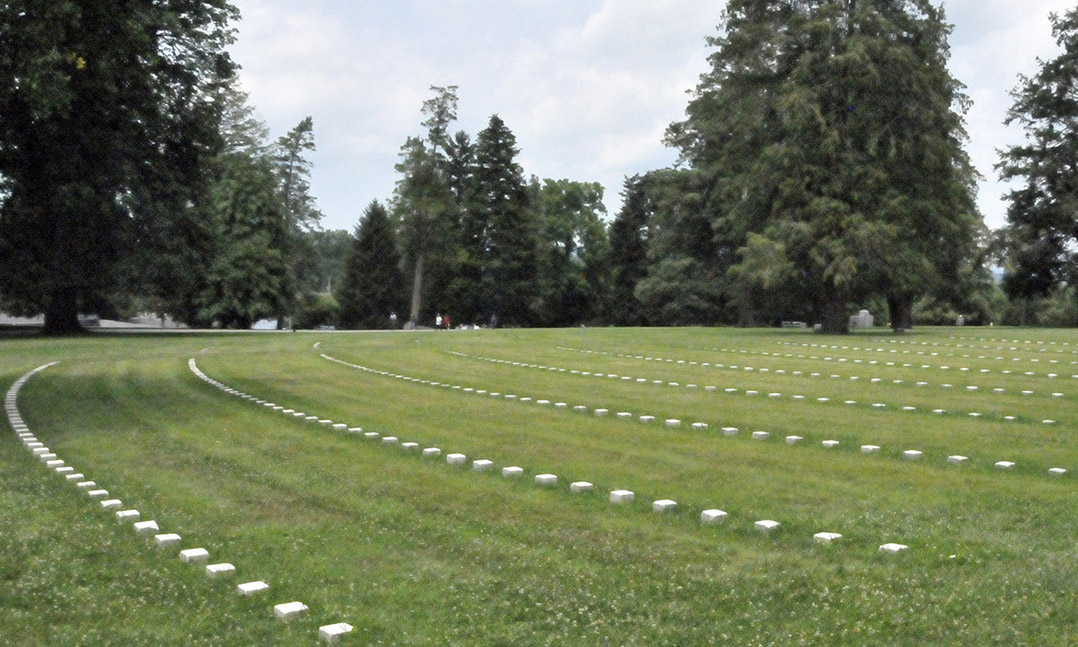
Today, in our ongoing road trip, we come to the Gettysburg National Cemetery, the site of Abraham Lincoln’s famous address.
When the Battle of Gettysburg ended July 4, 1863, after three days of ferocious fighting, hundreds of soldiers from both sides lay dead or dying in the streets and fields in and around Gettysburg, Penn. Thousands more lay in shallow graves where they had fallen. It soon became clear that Gettysburg, with a population of 2,400, could not provide proper burials for all the fallen Union soldiers. As a result, the Commonwealth of Pennsylvania purchased 17 acres atop Cemetery Hill, near where Union soldiers had beaten back “Pickett’s Charge,” for a cemetery. Over several months, 3,512 Union dead were buried in concentric semicircles. Eighteen semicircles included bodies from the 18 states that had provided volunteers. Another semicircle contained bodies of United States Regulars. Another 979 bodies, never identified even as to their state, were buried in three other sections.
On Nov. 18, 1863, President Lincoln came to Gettysburg by train and spent the night at the home of David Wills, a Gettysburg attorney instrumental in the cemetery’s creation. The next day, following a two–hour speech by Edward Everett of Massachusetts, Lincoln delivered the 272 words of the Gettysburg Address that he believed the world would not “long remember.” In 1865, Massachusetts commissioned the Soldiers’ National Memorial, to be placed in the center of the semicircles, near where Everett and Lincoln spoke. The 60-foot-tall monument, dedicated on July 1, 1869, includes a statue at the top signifying liberty. Four smaller statues represent War, History, Peace, and Plenty. In January 1912, the Lincoln Address Memorial was erected about 300 yards from where Lincoln made his famous speech. Today, the train station where Lincoln arrived in Gettysburg and the home of David Wills are popular museums.
